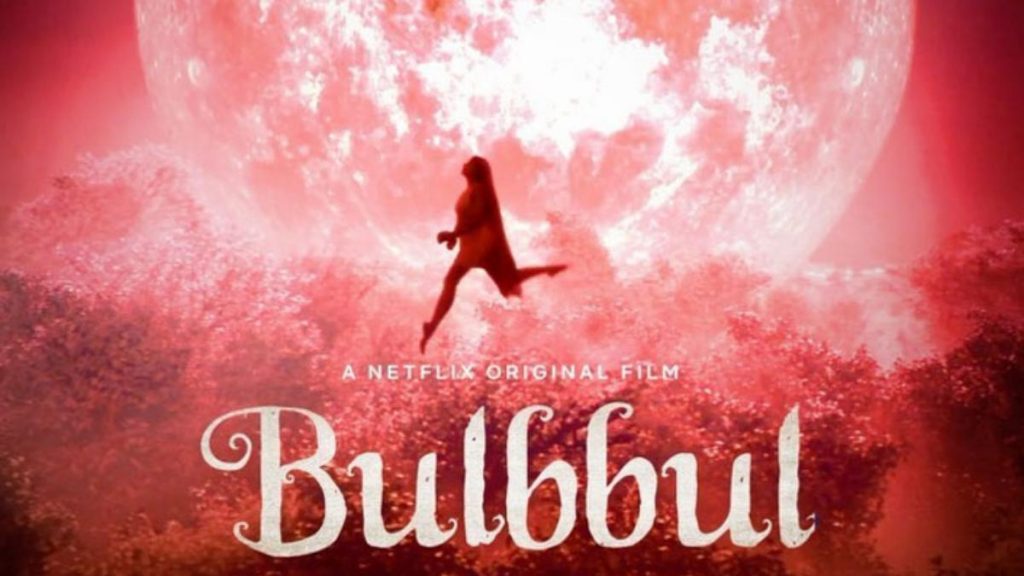Anushka Sharma and her brother, Karnesh, have built quite a track record for themselves as producers with their off-the-beaten-track films and the web series, Paatal Lok. Bulbbul, their latest venture, is another such project, a Netflix original film streaming on its OTT platform. The film is helmed by writer-turned-director Anvita Dutt, who makes an assured enough directorial debut.
With Bulbbul, Anushka Sharma continues her trend of producing women-centric films set against a backdrop of largely the supernatural world and the world of horror. The period film, set between 1881 and 1906 in the Bengal Presidency, makes some pertinent points on the treatment of women, bound as they are by stringent patriarchal values. It does this deftly enough as it combines mythology, the outwardly and horror into a sumptuous looking if perhaps over designed fable-like narrative. A little sharper writing and some subtlety in its treatment instead of so much style would have helped the film considerably.
In 1881 when just a little girl, Bulbbul is married off to the much older man, Indranil (Rahul Bose). Lost in the huge haveli, the only person she forms a kinship is with his younger brother, Satyajit, who is much closer to her in age. The story then moves forward in time 20 years later. Seeing the closeness between Satyajit ‘Satya’ (Avinash Tiwary) and Bulbbul (Tripti Dimri), Indranil sends him off to London to study law. When he returns to the haveli 5 years later, Satya is surprised to see the distraught young woman (Tripti Dimri) he left behind is now a confident young woman who rules the haveli but Indranil no longer lives there, having left the house. His mentally challenged twin bother, Mahendra (also Rahul Bose), has died in the meanwhile, leaving his wife, Binodini (Paoli Dam) a widow. Satya also resents the closeness that has developed between Bulbbul ad the local doctor, Sudip (Parambrato Chatterjee). In the midst of all this, there is a series of killings of men that is attributed to a local witch who resides among the trees and who has twisted feet. Satya decides to investigate the truth…
After doffing its hat to other well-known Hindi and Bengali films (and literature) dealing with a similar timeframe in Bengal and invoking certain themes and plot points akin to them such as Satyajit Ray’s Charulata (1964), Guru Dutt’s Sahib Bibi Aur Ghulam (1962), Sanjay Leela Bhansali’s Devdas (2002) and Rituparno Ghosh’s Choker Bali (2003), Bulbbul, thankfully, goes beyond their references to tell its own story. The film effectively brings out the caged plight of women, be they belonging to rich feudal households or to the lower classes. It highlights how patriarchy controls them and lays the ground rules of what they can do and what they cannot do. And though a period piece, little has changed for majority of women in current day India thereby giving a film a relevance to today’s times as well.
What is fascinating in the film is the dynamics of the relationships of the characters with each other within the enormous haveli, where, as Binodini tells Bulbbul that every such house has big secrets. The interplay between Satya and Bulbbul, Bulbbul and the doctor, Indranil and Binodini and above all, Binodini and Bulbbul, who have a bond with both being women understanding each other yet playing off each other for one-upmanship. This gives the film much of its layering and makes for some rich viewing. However, Mahendra is not etched out as well or as integral as the other characters and is used mainly for the big pot point of the film to occur.
While, no doubt, a lot of thought has gone into the look and feel of the film, eye-catching though it all is, it is very much in your face with the metaphors far too obvious. The extensive use of red hues in the film’s color scheme only underlines in triplicate its emotions of passion, its moods of danger and its representation of gory violence and of course, blood – there is a lot of it. Each time the night is bathed in an aura of red, we know something untoward will happen. It does… Dutt leaves but a few things to the imagination, and which when she does, works far more effectively for example, the ‘rebirth’ of Bulbbul.
The performances, by and large, are spot on. Tripti Dimri sparkles as the titular character and owns the film. She is ably supported by Parambrato Chatterjee and Paoli Dam. However, Rahul Bose is just so-so in his dual roles while Avinash Tiwary struggles to make something of an underwritten role.
The film also owes a lot to its rich-in-detail production design (Meenal Agarwal), its rich color palette and the moody cinematography (Siddharth Diwan), and its evocative musical score (Amit Trivedi). The editing keeps the flow, rhythm and pace of the film moving along smartly. Some cuts to flashback sequences, though, are too obvious as if telling us the viewers that this is in case you didn’t get it! Again, the film needed more subtlety in its treatment. The dialogues in Hindi don’t work as well as they should and you cannot but help feel that perhaps the film would have been that much better rooted had it been made in Bengali.
All in all, Bulbbul has its moments . No doubt, you’re taken in by the narrative while watching the film, but at the same time, you can’t help feeling by the end that it’s interesting but if only…
Hindi, Supernatural, Horror, Drama, Color


